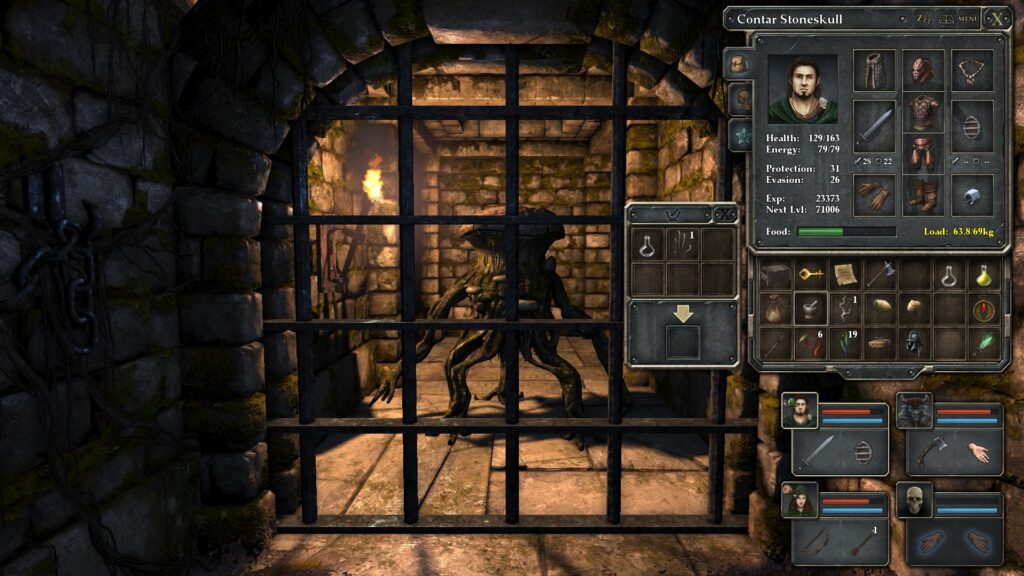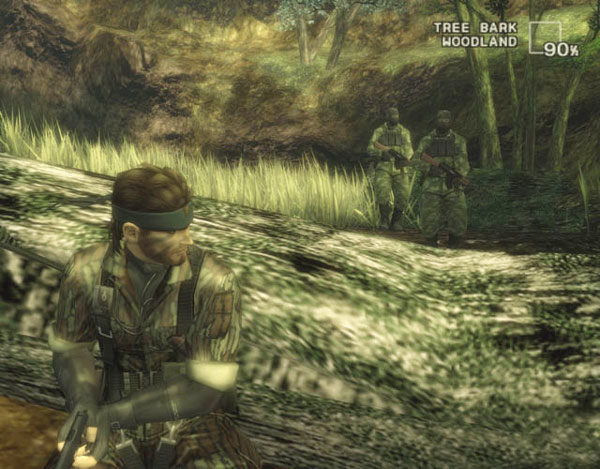
If there’s one mechanic that has stood the test of time and transcended genres, it’s stealth. Stealth elements can be seen in today’s action-adventure titles like Batman: Arkham Asylum, third-person shooters like Uncharted 2: Among Thieves, first-person shooters like Dishonored, and even 2D side-scrollers like Mark of the Ninja.
Since its introduction by early games like 005, Castle Wolfenstein, and Metal Gear, stealth has been a popular and captivating challenge in a lot of games. To the untrained eye, stealth is the same in every game—sneak around to kill people and/or complete an objective without being seen. But to stealth fans and game designers, there are different ways to look at stealth, including newer mechanics currently bringing innovation to the genre.
Below are only three of the many types of stealth found in games that are worth looking into if you ever find yourself working on a similar project:

Hiding To Avoid Visual Detection
Stealth doesn’t get any more basic than this. Avoiding visual detection means that the player character is not discovered by an enemy, which is usually done by line-of-sight mechanics. Some enemies merely see the player visually, while others can smell them or even sense them with fictional powers. The goal of the player is to avoid detection by hiding behind objects, in the shadows, above their line-of-sight, etc.
It’s amazing to consider that the recent Metal Gear Solid V would not exist if a ground-breaking NES game hadn’t been released more than 25 years ago. Metal Gear was one of the first titles to have a line-of-sight mechanic where players had to avoid the guards’ front view to not be detected. If you were seen, you had to fight the guards.
Since then, the number of games that employ this simple style of stealth has grown dramatically, with recent titles including Middle-Earth: Shadow of Mordor, Assassin’s Creed: Unity, and of course, the latest entry in the Metal Gear Solid franchise. Whether they make heavy use of stealth or players can get by without using it, players tend to appreciate the option of either jumping into combat or taking a slower, more calculating approach that involves picking off enemies one by one.
Hiding Via A Disguise
Using disguises to blend into groups and not stand out has been used in everything from movies and television shows to classic novels written ages ago. Everyone is familiar with the Trojan Horse from Virgil’s Aeneid, a Latin epic poem written more than two thousand years ago. After a decade of failing to conquer Troy, the Greeks used the massive wooden disguise to infiltrate the city’s impenetrable walls and lay waste to it, ending the war.
This kind of stealth, which is also referred to as social stealth, normally uses NPCs and a disguise as its two main ingredients. To avoid detection, players wear a specific costume that allows them to blend into a crowd of NPCs. This fools patrolling enemies into thinking that the player is just another bystander, party guest, etc.
One of the best examples of this is found in the multiplayer portion of Assassin’s Creed: Brotherhood, which involves players hunting and killing each other in an area filled with NPC characters. Most of the NPCs on the maps look identical to the player characters, which means you can walk casually or join a group of them to fool your pursuer. There are even abilities that change your look temporarily to have a better chance of blending in.
Hiding To Hunt
As opposed to games where detection means losing the game or a difficult combat encounter, games with a hunter stealth element have players find and kill targets. This mode empowers players with a sense of control and dominance as they strike fear in the hearts of enemies while taking them down, one by one.
One of the best examples of this stealth are the Batman games by Rocksteady, which include Arkham Asylum, Arkham City, and Arkham Knight. Players are usually more than free to run up to enemies and beat them to a pulp, but sometimes this isn’t the best approach. Instead, players must move undetected through vents and on high-placed gargoyles to single out enemies. There’s nothing better than hearing thugs panic as they notice more and more of their comrades lying unconscious.
Like Batman himself, this type of stealth mode is satisfying because it makes players feel like a hunter stalking its prey. The trick to making this kind of stealth work in your game relies heavily on the reaction of the enemies. The more frightened they get as this mysterious force hunts them, the cooler the player feels.
[su_note]Learn more about the School of Game Design at the New York Film Academy by clicking here.[/su_note]

